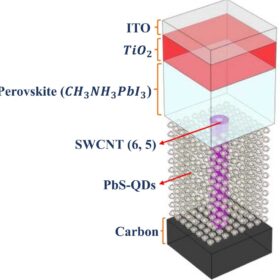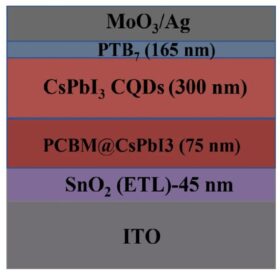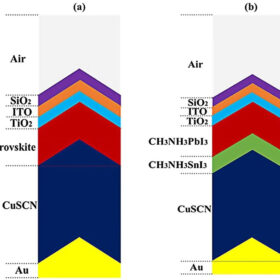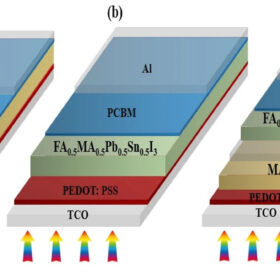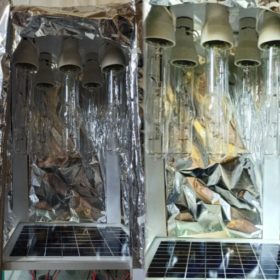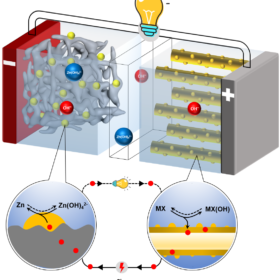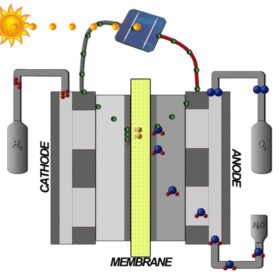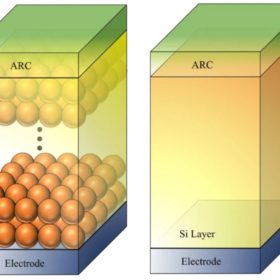Perovskite PV cell hits 19.9% efficiency with single-walled carbon nanotube
Iranian researchers have improved perovskite solar cell efficiency by using a single-walled carbon nanotube as a hole transport layer surrounded by lead sulfide colloidal quantum dots.
Perovskite quantum dot solar cells on the path to achieve 30% efficiency
Researchers in Iran have identified new ways to design perovskite quantum dot solar cells via a series of simulations. They investigated, in particular, how the perovskite absorbers can be gauged in order to enhance their electro-optical properties.
New perovskite solar cell design with silicon dioxide anti-reflector layer
Researchers in Iran have designed a new light trapping (LT) structure for perovskite solar cells that reportedly achieves optimal light absorption without impacting the electrical properties of the cells. The key element of the device is an anti-reflector layer based on silicon dioxide (SiO2) that improves light harvesting and charge extraction performance.
Novel design for inverted all-perovskite bilayer solar cells with 24.83% efficiency
An international research team has crafted an innovative solar cell design. By employing a top absorber consisting of methylammonium lead iodide (MAPbI3), a lead-halide perovskite, and a bottom absorber composed of FA0.5MA0.5Pb0.5Sn0.5I3, a perovskite material, the cell maximizes light absorption across a broad spectrum.
Concentrating photovoltaics for agricultural applications
A research team has studied the potential of using concentrating photovoltaics in agriculture and found that it offers advantages in terms of energy yield and de-shading compared to conventional photovoltaics. However, the higher costs must be carefully considered.
Cooling solar panels with cold steam from ultrasonic thermoelectric generators
Iranian researchers have looked at how ultrasonic thermoelectric generators could be used to lower the operating temperature of solar modules. Their new system can generate cold steam via ultrasonic piezoelectrics in a simple batch system.
Super-fast, long-life aqueous rechargeable zinc battery
An international group of researchers has demonstrated an aqueous zinc battery with excellent performance in terms of capacity, rate capability, specific energy, and output voltage. The supercapacitor-battery hybrid device has also shown unprecedented cycling stability 99.2% capacity retention after 17,000 cycles at 100% depth of discharge.
Solar-driven multigeneration system for hydrogen, electricity, heat
An Iranian research group has developed a system that combines photovoltaic-thermal modules with organic Rankine cycle, a proton exchange membrane electrolyzer, and liquefied natural gas. The ideal system has an exergy efficiency of 16.24%, a cost rate of $4.48 per hour, and 33.32 kW of net electrical power.
Ultra-thin silicon nanoparticle solar cell with 11% efficiency
Iranian scientists have demonstrated a multi-layer silicon nanoparticle (SNP) solar cell based on nanoparticles that are densely stacked inside a dielectric medium. They considered different SNP structures and configurations to tailor these particles as a p–n junction cell.
Iran pre-qualifies 85 bidders for 4 GW solar tender
The Iranian authorities will choose development proposals from domestic and foreign investors for solar projects ranging from 10 MW to 250 MW in size. The selected developers will be awarded 20-year power purchase agreements at a fixed tariff.
